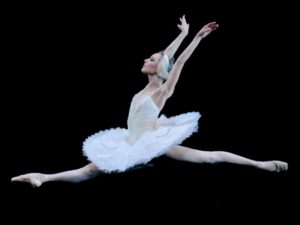 I’ve already waxed poetic about the process of painting and its importance to me as an artist over the product that is created, the piece of art. I get great insight and enjoyment out of the process of painting, and – truth be told – I also like the product that is the end result of that . . . but then it’s on to another painting experience!
I’ve already waxed poetic about the process of painting and its importance to me as an artist over the product that is created, the piece of art. I get great insight and enjoyment out of the process of painting, and – truth be told – I also like the product that is the end result of that . . . but then it’s on to another painting experience!
Let me see if I can make the distinction more concrete.
Thomas Kinkade comes to mind as someone who created art product.  He and his factory churned out thousands of pieces following a simple formula, one that was appealing to the largest segment of the population. I doubt he had any more interest in the process than Henry Ford did in his production line after it had been set up and running successfully for a time. By the way, I understand that Kinkade was so paranoid about people copying his work that he ground his own hair up and put it in the paint used for his signature so that DNA analysis could positively link an authentic work to him.
He and his factory churned out thousands of pieces following a simple formula, one that was appealing to the largest segment of the population. I doubt he had any more interest in the process than Henry Ford did in his production line after it had been set up and running successfully for a time. By the way, I understand that Kinkade was so paranoid about people copying his work that he ground his own hair up and put it in the paint used for his signature so that DNA analysis could positively link an authentic work to him.
Ok, so Kincade is such a laughable example I’m sure it doesn’t communicate to a lot of people . . . so how about this one: Keith Haring.
 I love Keith Haring. I don’t care so much about his art, but I think what he accomplished and what he taught us is remarkable. But looking at the art – at least the early stuff (he did get a little more artistic in the later years), it’s all formula. Yes, he packed his work with message and meaning, but the use of memorable symbols and icons made his work – like Kincade’s – instantly recognizable by millions of people. Haring was very conscious of this product orientation and while he was having shows at the Whitney, he was also slapping his images all over tee shirts and buttons and selling the heck out of them at his Pop Shop.
I love Keith Haring. I don’t care so much about his art, but I think what he accomplished and what he taught us is remarkable. But looking at the art – at least the early stuff (he did get a little more artistic in the later years), it’s all formula. Yes, he packed his work with message and meaning, but the use of memorable symbols and icons made his work – like Kincade’s – instantly recognizable by millions of people. Haring was very conscious of this product orientation and while he was having shows at the Whitney, he was also slapping his images all over tee shirts and buttons and selling the heck out of them at his Pop Shop.
That’s the product orientation of the artistic process.
On the other side is the process; and process painters are also all over the place.
Consider Jackson Pollock. Could there ever be any thing more process oriented than his splashy canvases? And the beauty of Pollack is that while he was having his process experience, he was creating exciting work that the rest of us could experience in similar fashion. When you look at Pollock, you almost feel the process vicariously. That viewer reaction is what makes his work great.
Painting for me is a dance. It’s a physical process involving me, a canvas and pigment. I have a grasp of technique of color, shape, composition, depth and balance. They assert themselves in the dance. The end result can be very enjoyable for the viewer, just like a well executed ballet can be enjoyable to an audience. But the dancer’s experience, the dancer’s drive and pleasure is not the same as the audiences.
And this is why I don’t love my paintings. I loved making them, I loved the process. But once the dance is done, I’m on to the next dance; and the product of the last dance is there for somebody else to love . . . .hopefully.
